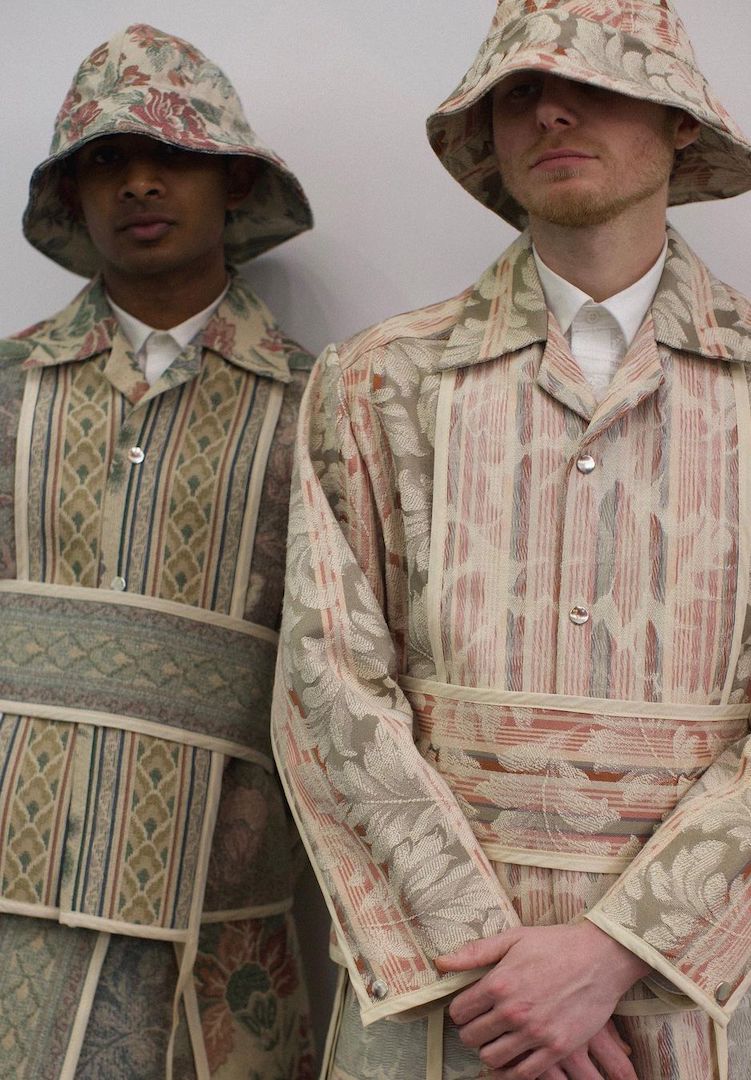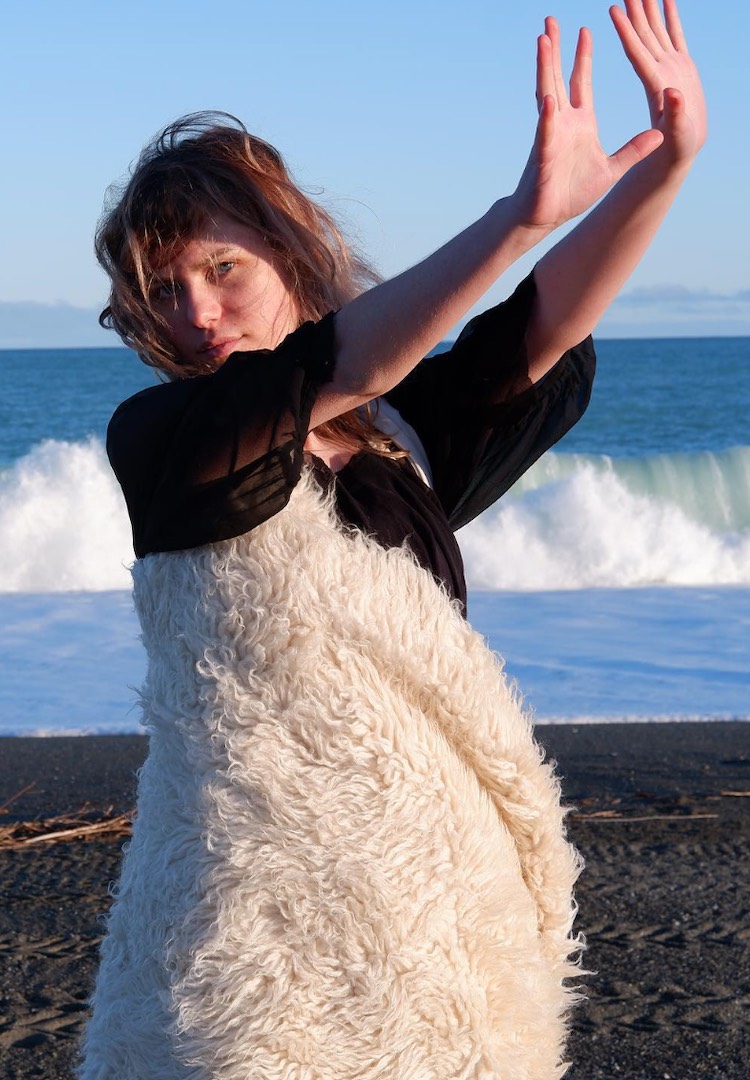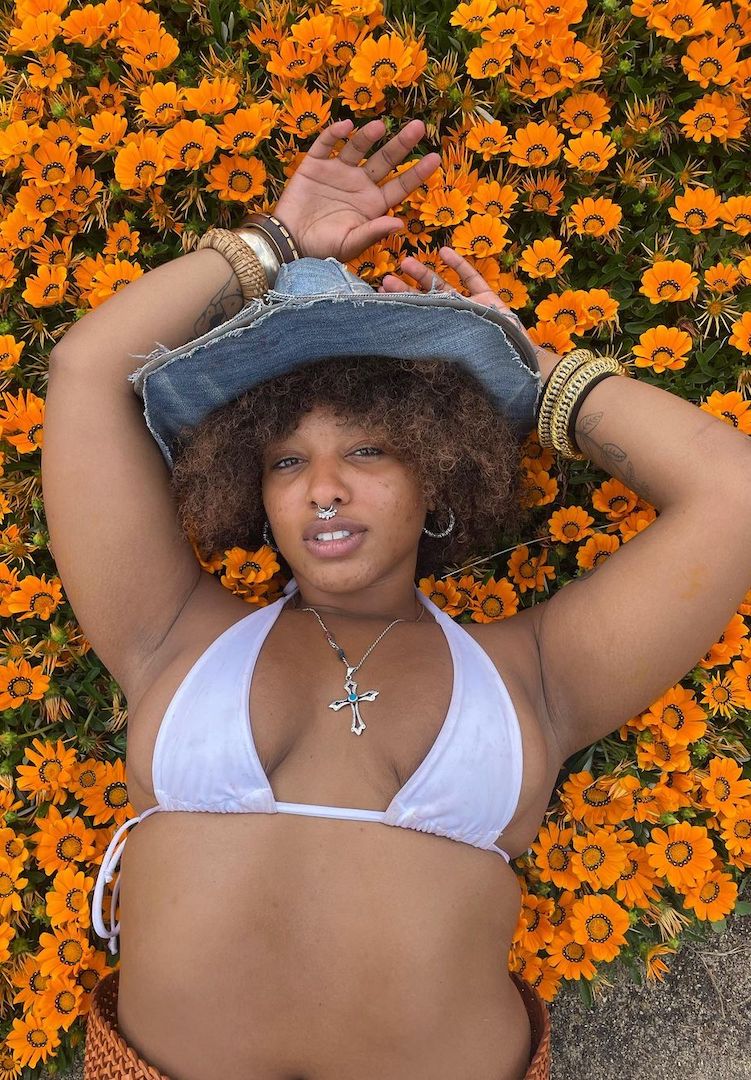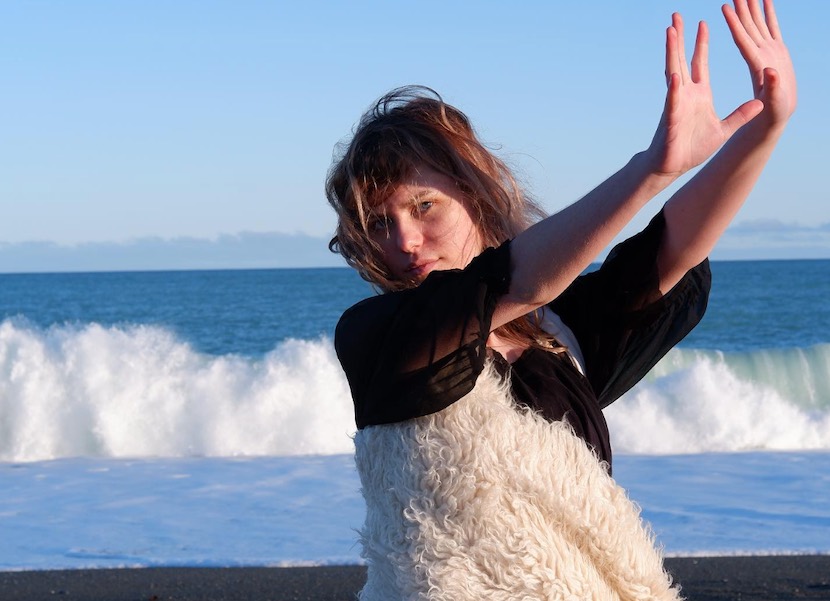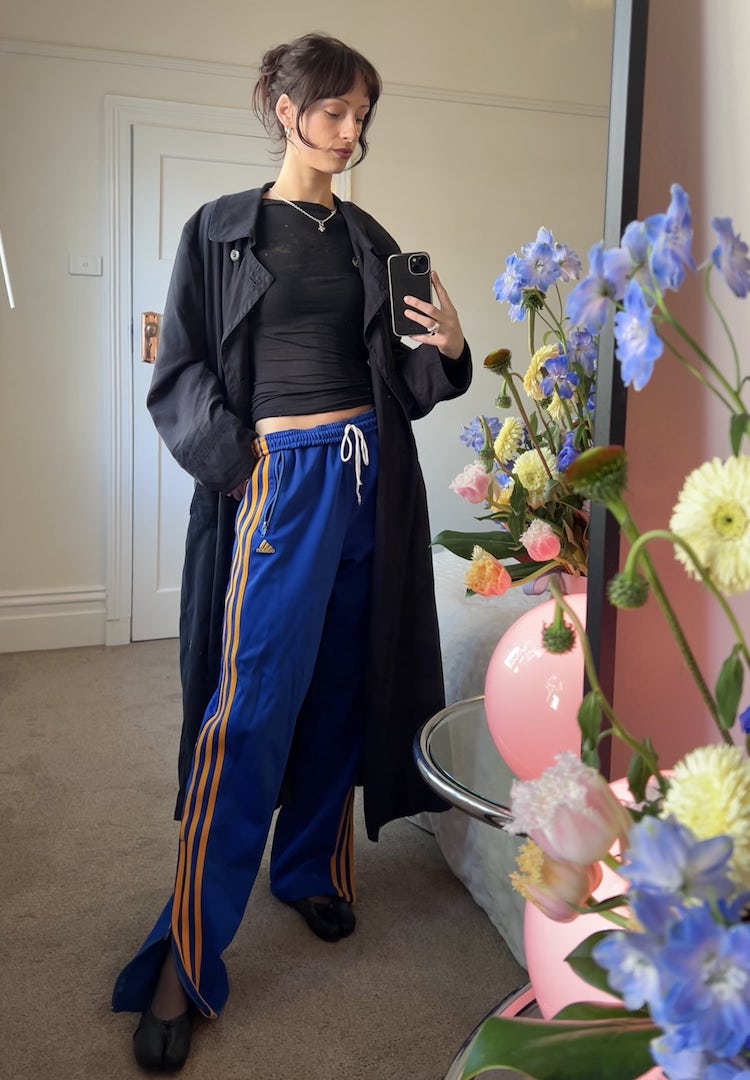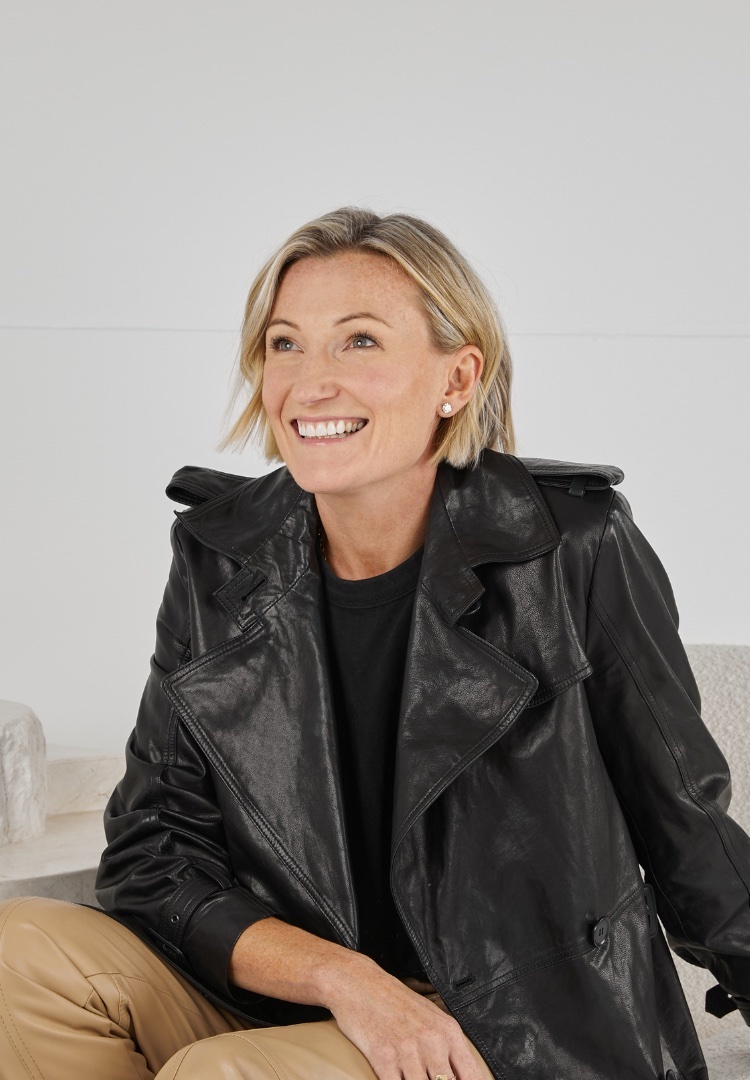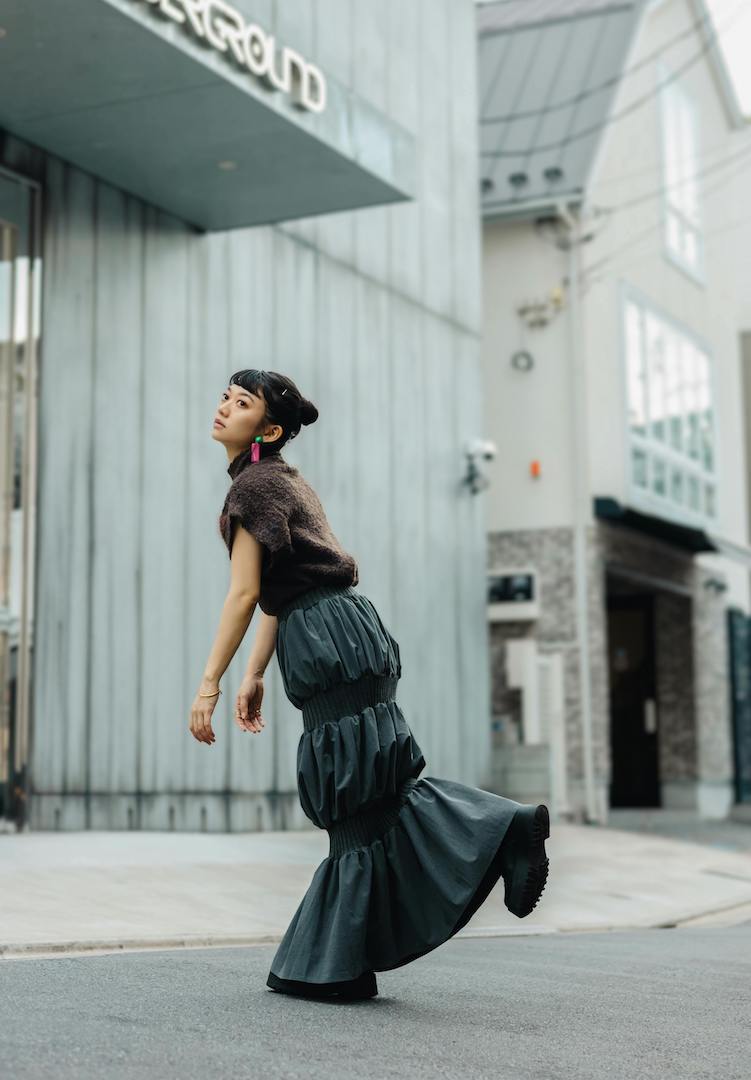Being is the New Zealand fashion project offering one-off, handmade clothing
IMAGE VIA @BEING.CLOTHES/INSTAGRAM
WORDS BY IZZY WIGHT
“The experience of my clothing on the body is really important to me, how they feel when you’re inside them is just as important as the silhouette.”
Moving between mediums of sculpture, photography, drawing and textile, Brooke Georgia creates art “centred around the presence/absence of the body and experience of the self”. Based in Christchurch, New Zealand, Brooke co-currently operates her art practice and fashion project, Being.
For more fashion news, shoots, articles and features, head to our Fashion section.
Using repurposed and reconstructed materials, Being pieces are created using Brooke’s process of “intuitive stitching, dyeing and reworking”. Each Being garment is one-off and beautifully unpredictable, made to feel like an extension of the body itself. Below, Brooke speaks on the Being journey so far.
Tell us about you. What’s your fashion background?
View this post on Instagram
I have been a practising artist in installation sculpture and drawing for around 25 years, and I have a degree in design. I have sewn since I was a child, and have always loved clothing and dress-ups and historical clothing. It took me a long time to see my love of fashion and clothing as something valid… I have always reconstructed and re-dyed clothing for myself.
In my art practice working with found objects and clothing – centred around the presence/absence of the body and experience of the self – I was looking at clothing from a distance as a metaphor or symbol. Gradually the two practices – clothing as subject and object – came together, and I started Being.
How did the label get started? Talk us through the process and the challenges.
View this post on Instagram
When I initially moved towards clothing as a product, I was stitching and appliquéing onto t-shirts. Then I started reconstructing jerseys with darning and adding in pieces or burning holes in them and replacing [them] with silk. I was charcoaling furniture and skirting boards for my art practice so of course, I tried [with] the clothes too.
I made a sculpture of white T-shirts that had been cut up for rags and then realised I could use a similar technique in parts of the clothing. That’s some examples of the back-and-forth between the two processes earlier on.
View this post on Instagram
Sharon Ng was a tutor of mine… in the ‘90s and she really helped me transition what I was doing in 2016 by stocking my work in her beautiful store NG in Christchurch (which recently closed its doors). Her encouragement and feedback were fantastic.
I had always done a bit of photography but that’s been a big learning curve too, learning how to play around with styling and presentation of the clothes. I do the shoots myself and have had some styling help from Alannah Kwant (also modelling) over the past few years, but mostly it’s me finding things like old fisherman’s waders and making it up as I go along.
View this post on Instagram
I really enjoy that part of the process, which has been a surprise to me. I like the imagery to be imperfect as well, unfinished in some way. I expanded retailers to include The Service Depot in Wellington, Public Record and Tür in Auckland and Midden in Portobello, Dunedin. The interactions with those retailers are really helpful and inspiring. I’m glad not to be the shopfront person myself and am truly inspired by the curation of all their spaces.
What were you trying to achieve from the project at the time? How has this evolved and what are you trying to communicate through the brand now?
I don’t really think of Being as a ‘brand’ because it comes out of my art, which I’ve spent so many years world-building. I think this ‘world’ is where I’m always coming from and returning to, it’s not a very conscious process… all the work I’m making comes from this kind of antediluvian sea in me. I think it’s really worth it to take a long time to build something deep and wide and true in yourself, otherwise, it’s so easy to be pulled around.
Where did the name come from?
View this post on Instagram
How to describe experience or presence of the body. The experience of my clothing on the body is really important to me, how they feel when you’re inside them is just as important as the silhouette. I select the materials and make the work intuitively so although I may be repeating a certain construction process no two pieces are ever the same.
How would you describe Being to someone who’s never seen it before?
One-off, intuitive clothing, handmade and often hand-dyed, repurposed and reconstructed materials. Beautiful, muted and dark colours, hand-stitched, raw-edged, restrained… feels beautiful on, but is not entirely predictable as a garment.
What are you most proud of in your work on your brand?
View this post on Instagram
I love that the clothing carries the etymology of my entire art practice. And that this fits seamlessly with the repurposing aspect of my work. Attitudes to repurposing have completely changed over my lifetime. Good materials such as wool or silk are understood as quality even – and sometimes especially – if they’ve had a previous life. Repair is more highly valued, as a practice and as a metaphor. I am also proud I have followed my intuition even when it was challenging to do so.
What do you wish you knew when you started?
The challenges have included feeling pulled around by requests in a way I don’t have to be open to in fine art. In fine art, my work is my work and that’s it. No one says “Make another drawing in blue”, or “Can you make the same sculpture, but longer?”. Unfortunately, my creative flow tends to completely shut down around these kinds of requests, and if I acquiesce, I make crap.
View this post on Instagram
So that’s something I wish I was clearer on at the beginning – things work out better when you know what to say no to. And because I built things up slowly… and wasn’t in the framework of ‘launching’ a business, throwing money and advertising and exposure at it, it really gave me room to learn as I went. I highly recommend this approach!
Who do you think is most exciting in the Australian/NZ fashion scene right now?
All the designer-makers (and there are a lot if you start looking) who are wanting to make clothes while really understanding the materials and exactly where and how they were sourced. These smaller, more conscientious business models are the future I’d like to see.
Who inspires you?
View this post on Instagram
I mostly look to art for inspiration, and I seem to look further afield. Ian Kaier, Doris Salcedo, Louise Bourgeois, Tracey Emin, Karla Black…
For clothing, [I’m inspired] by Martin Margiela, Rei Kawakubo, Yoji Yamamoto and historical clothing – mostly [from the] 1800s. Handmade clothes and the construction of a kimono are so inspiring too. And I’m inspired by New Zealand poets, especially Jasmine Gallagher and Alison Glenny.
Who is in your wardrobe right now?
View this post on Instagram
Lots of Being and if I do spend money on clothing, I have it for years – like a Martin Margiela jacket, Ann Demeulemeester dress, Christian Peau boots, and vintage men’s pants.
How can we buy one of your pieces?
The Service Depot, in Wellington, Public Record in Auckland, Midden in Portobello, Dunedin and through my Instagram [accounts], @being.clothes and @brooke.georgia.etc.
For more of Brooke’s work, head here.

